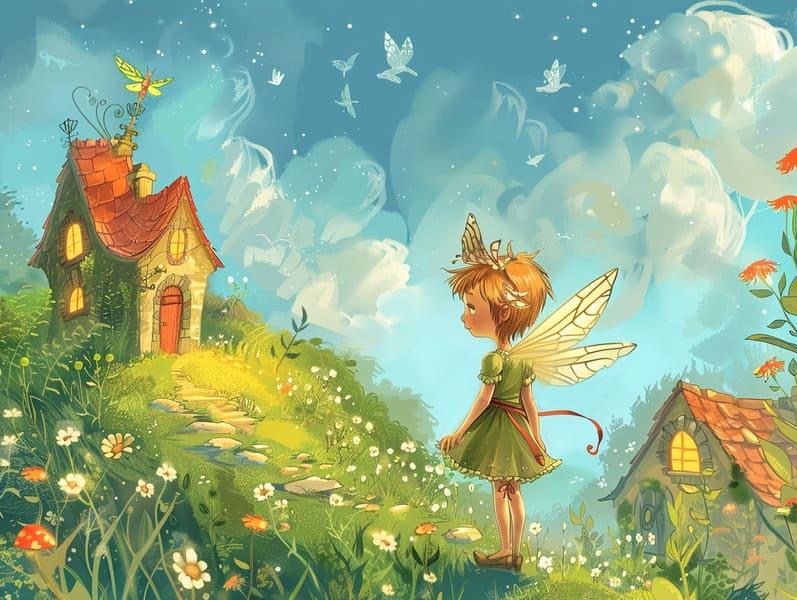Tracing the Heritage of Classic Fairy Tales with Its Unceasing Allure.
Tracing the Heritage of Classic Fairy Tales with Its Unceasing Allure.
Blog Article

Legendary fairy tales have long histories. These stories have been whispered from one generation to the next centuries before they were ever inscribed. They originated from a variety of backgrounds, including Middle Eastern traditions. They were initially disseminated among elders, often carrying themes and messages mirroring the societal norms and beliefs of the time.
The Brothers Grimm, Jacob and Wilhelm Grimm, were among the first to compile and publish many of these beloved fairy tales. Their anthology, "Grimm's Children's Stories," included narratives like "Cinder Maid," "Little Brother and Little Sister," and "Snow White," which have since become essentials in the world of beloved fairy tales. Similarly, the Danish author's fantastical narratives, such as "The Mermaid," and "The Duckling's Story," have captured hearts worldwide, securing their place in the pantheon of famous fairy tales.
Despite their ancient origins, these stories remain as relevant as ever, especially as kids' bedtime tales. These whimsical stories are now available in different formats, including vibrantly illustrated books, enchanting animations, and online storybooks.
Their unwavering allure can be connected to several delightful features:
Valuable Lessons: Old fairy tales often teach important moral lessons. Fairy tales like "The Boy Who Cried Wolf" teach the benefit of integrity, while "The Tale of the Tortoise and the Hare" highlight the values of perseverance and meekness. These tales offer young readers clear distinctions between ethical and unethical, shaping their moral compass in a soft yet meaningful way.
Empathy and Awareness: Classic fairy tales frequently portray beings facing challenges and struggles, inciting young listeners to resonate with their struggles and support their triumphs. For instance, "Beauty and the Beast" teaches us the virtue of looking beyond appearances to realize the real person of a soul, enhancing awareness and understanding.
Cultural Insights: Many fairy tales are deeply ingrained in the cultural contexts from which they arose. Engaging with these stories can provide enlightening views into different customs, nurturing a sense of global awareness and understanding.
Inventiveness and Fantasy: The supernatural elements in fairy tales—spells and potions—trigger children’s dreaming abilities. These stories carry readers to fantasy realms, provoking fantasy dreams and a sense of mystery that endures a lifetime.
Timeless fairy tales are not only charming but also edifying. They act as fantastical tools in promoting various intellectual and emotional capacities in little ones. When classic fairy tales are voiced, they improve language development by presenting new word meanings and sophisticated sentence structures. This practice also develops listening abilities and mindfulness, as young ones stay focused, eager to see what happens next.
Furthermore, reflecting on the themes and characters of traditional fairy tales can develop problem-solving abilities and critical thinking. Children are educated to recognize patterns, predict happenings, and realize cause and effect. These talks also help children communicate their thoughts and feelings, adding to their emotional intelligence.
In today’s online age, the proliferation of internet fairy tales has made these narratives more within reach than ever. Internet resources and digital apps extend broad selections of famous fairy tales that can be viewed this site or listened to anytime, anywhere. Fairy tales recited are particularly widespread, making available an enjoyable way for the young to experience these bewitching tales. Read-aloud stories and read-to-me stories move characters and settings to life, often augmented by whimsical melodies and harmonies that heighten the storytelling experience.
The everlasting appeal of traditional fairy tales lies in their ability to adapt to new eras while holding onto their core messages. Contemporary adaptations of these narratives often integrate more diverse figures and modern settings, making them familiar to today’s audience. However, the fundamental themes of braveness, sympathy, and truth remain unchanged, continuing to strike a chord with young listeners of all ages.
Timeless fairy tales also offer a sense of comfort and recognition. They grant access to a systematic narrative with a obvious beginning, middle, and end, often closing with the culmination of conflicts and the triumph of honesty over deceit. This certainty can be easing for the young, affording a sense of solidity in an inconstant world.
Classic fairy tales continue to bewitch and guide new generations, maintaining their grandeur and relevance in modern society. As children's bedtime stories, they bestow a perfect blend of fascination and comprehension, furthering moral values, empathy, and creativity. The presence of digital fairy tales and the widespread nature of fairy tales read aloud affirm that these classic narratives remain reachable to new generations.
By safeguarding and imparting these tales, we continue to admire the rich tapestry of inventiveness and cultural heritage. Whether you are delving into a vibrantly illustrated book, perusing a internet library, or listening through an audiobook, the appeal of bedtime fairy tales is always within reach. These stories teach us of the persistent force of stories and its ability to hold us together across generations and cultures.
Regardless if you are discovering a vibrantly illustrated book, delving into a virtual collection, or listening via an read-aloud story, the loveliness of popular fairy tales is always within reach.
These stories convey of the steadfast presence of fairy tales and its ability to bind us across epochs and places, casting a charm that enchants and educates alike.